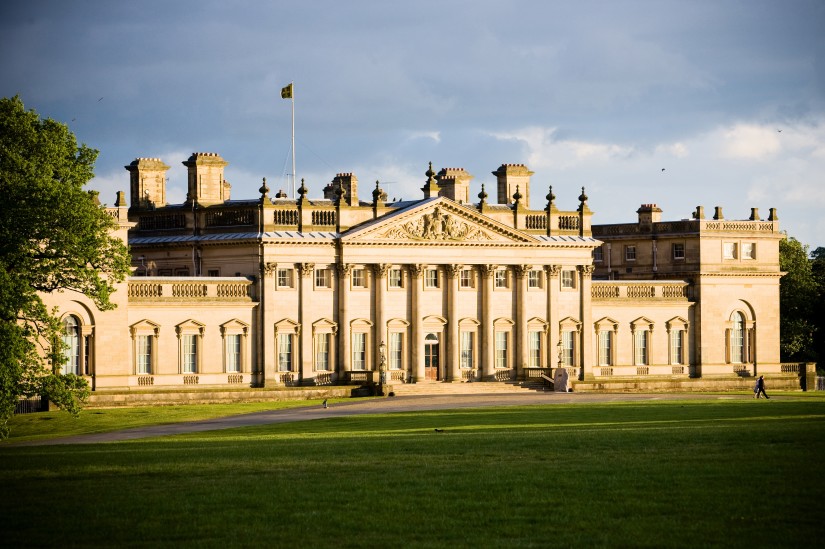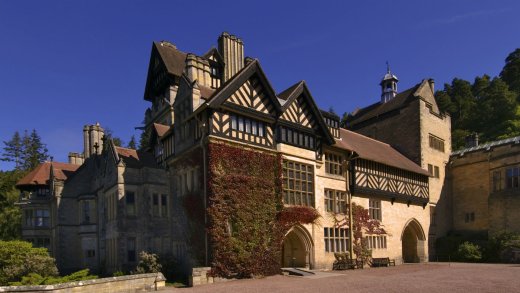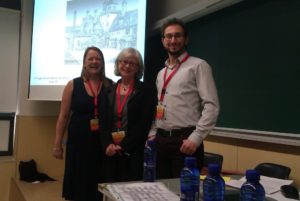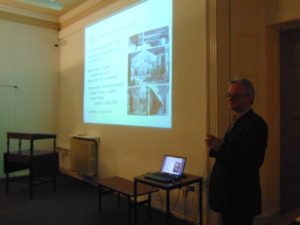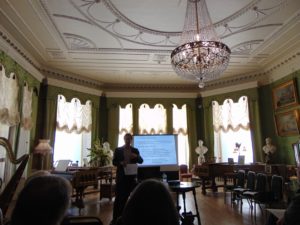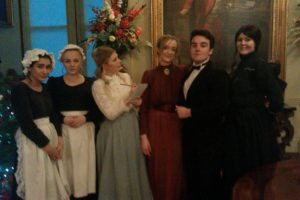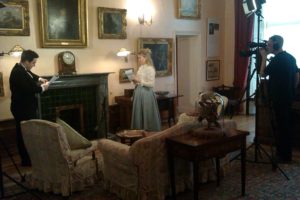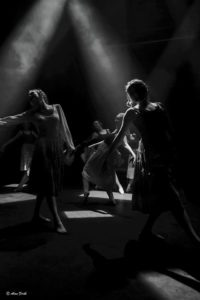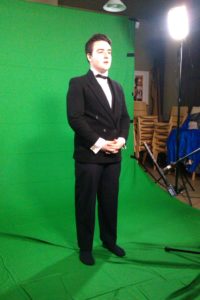Over the past month I have visited two local schools, Addingham and Springbank, to test our online interactive with Year 4 and Year 6 classes. “Is it a mystery game?” I was asked by one pupil as I was in the process of setting it up on the computers prior to the session. I replied that it was an educational game, which possibly didn’t quite imply the excitement they were anticipating, but nevertheless the responses to the resource have been very positive and encouraging, from pupils and teachers alike.
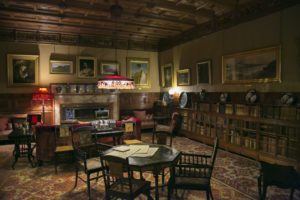
Over the different sessions I experimented with a few different ways of using the interactive in the classroom. In each case I began by leading the interactive from the front of the class, starting with Cragside and asking the pupils which rooms they wanted to explore (interestingly, in each session they wanted to start with the Library). In each room I opened the hotspot image and asked them the question before playing the associated video. I also wanted to see how the pupils used the interactive on their own, so depending on the session I then let them go through either the second and third or just the third house on their own. Unfortunately, at Addingham we noticed that when a whole class was trying to use the resource at once this slowed things down, and there were problems loading the videos. It also led in some cases to pupils, when left to their own devices, clicking through to the video content without being able to see the pictures of the rooms or the associated questions which the videos then answered.
Before my visit to Springbank, therefore, we implemented a fix aimed at addressing this, which was successful in that it slowed down the loading of the content in order to ensure that it would be visible before the video content would be played. With Springbank pupils, after going through the first house together, I asked a group of eight of them to work on the interactive at the back of the class, independently of the rest. They worked as three pairs at three computers, and two single pupils with a computer each – all had headphones for the videos. Meanwhile, I chose two volunteers from the rest of the class to lead the pupils through the next house, getting the class consensus on which rooms to visit, asking the hotspot questions and playing the videos. This worked very well and demonstrated how the interactive can be employed in the classroom as a peer-led learning exercise.
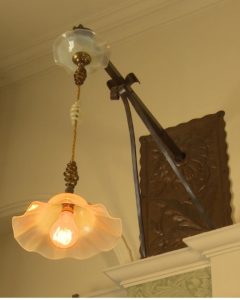
The pupils working on their own or in pairs at the back were able to use the interactive without the problems of the videos not loading properly, as we had previously seen at Addingham. The main feedback I received from this ‘focus group’ of pupils was that they wanted there to be more content: more rooms to explore, and more to see in each room. Unfortunately we’ve been limited by time and money on this project, so we stuck to four rooms for each of the three houses, with one hotspot and video in each, but I see this as a very positive response indicating that they were interested in and engaging constructively with the content.
The interactive provides a good catalyst to start discussions about a range of topics, from Victorian class and gender divides – and the contrasts and similarities with the present day – to the use of renewable energy through discussions of hydroelectricity at Cragside, to our own attitudes towards new, cutting edge technologies, to the questions and thought processes involved in designing and making everyday items. For example, Year 4 at Springbank picked up in particular on how posh Mr Grey, the butler at Cragside, sounded. “He’s like a robot!” they happily told me. This provided a perfect opportunity to discuss why it was appropriate that Mr Grey, working as he did for Lord Armstrong, conducted himself in a certain manner.
[youtube https://www.youtube.com/watch?v=XrJNY4TsMbE]
The quiz at the end of the interactive also provided an opportunity for the pupils to think about their knowledge of electrical topics covered in the KS2 curriculum. There are six multiple choice questions, each one relating to a circuit component with which the KS2 curriculum requires pupils to be familiar: wire, batteries, switches, lightbulbs, buzzers and motors. The questions draw on materials covered in the video content from the three houses, touching on scientific, historical and design aspects of the use of domestic electricity. In all cases I led this as an activity from the front of the class, asking questions, getting the pupils’ answers, and moving through the quiz. In the feedback, this was the aspect of the interactive which the Year 4 pupils said they found to be the most challenging, but as we want the resource to be useful for Year 6 as well I don’t think this is a problem; they did very well regardless.
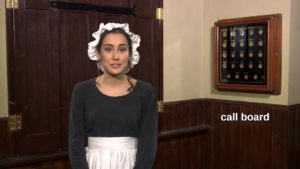
The feedback from pupils indicates that the interactive encouraged them to think about how people used electricity in the past, and what different opinions they had. To evaluate each session I asked the pupils to write down, on different coloured post-it notes: one thing they had learnt, one thing they found difficult, and what they wanted to learn next. The answers demonstrated an encouraging level of understanding and enthusiasm. A common response to the first question – what they felt they had learnt – was hydroelectricity, and also the period that people first starting using electricity in the home, including the fact that not many people had electricity at this time. The interactive thus effectively introduces pupils to the idea of hydroelectricity, and also helps them to historicise the development of electrical technologies. Other key points which pupils picked up on were that early electricity was not always reliable, and that maids were often scared of electricity.
There were a few warning signs here, though, and potential misunderstandings will be highlighted in our teachers’ resource to accompany the interactive. For example, a lot of pupils found the explanation of the cloisonné lamp at Cragside tricky, and whilst this is a useful tool for discussing several topics – for example conductors and insulators, how mercury is an unusual metal, and electrical safety – it is important to be careful in order to avoid some of the misconceptions which are evident from the feedback, for example that mercury was used to power lamps, or that the method of the electrification of Cragside’s cloisonné lamps was common at the time. Teachers may wish to use the animation of the cloisonné lamp we have produced for Cragside alongside the interactive to help explain this.
Regarding what they wanted to know next, pupils had a wide range of suggestions, from how electricity was used on the Titanic to the uses of electricity in sport. Common questions were how electricity is generated, who the first person to use or discover it was, and aspects of social history, for example asking about the lives of children and servants, and what adults did in their spare time. Some asked some very insightful questions, such as why people needed electricity when they had candles, and what electricity is going to be like in the future. These responses indicate that the interactive serves to fuel interest in Victorian history, and also in how electricity works and the ways in which it is used in our everyday lives. Teachers can therefore use our interactive as a starting point for such discussions, and then go on to explore some of these other science or history topics in more depth.
The interactive is now live, and can be viewed here.


